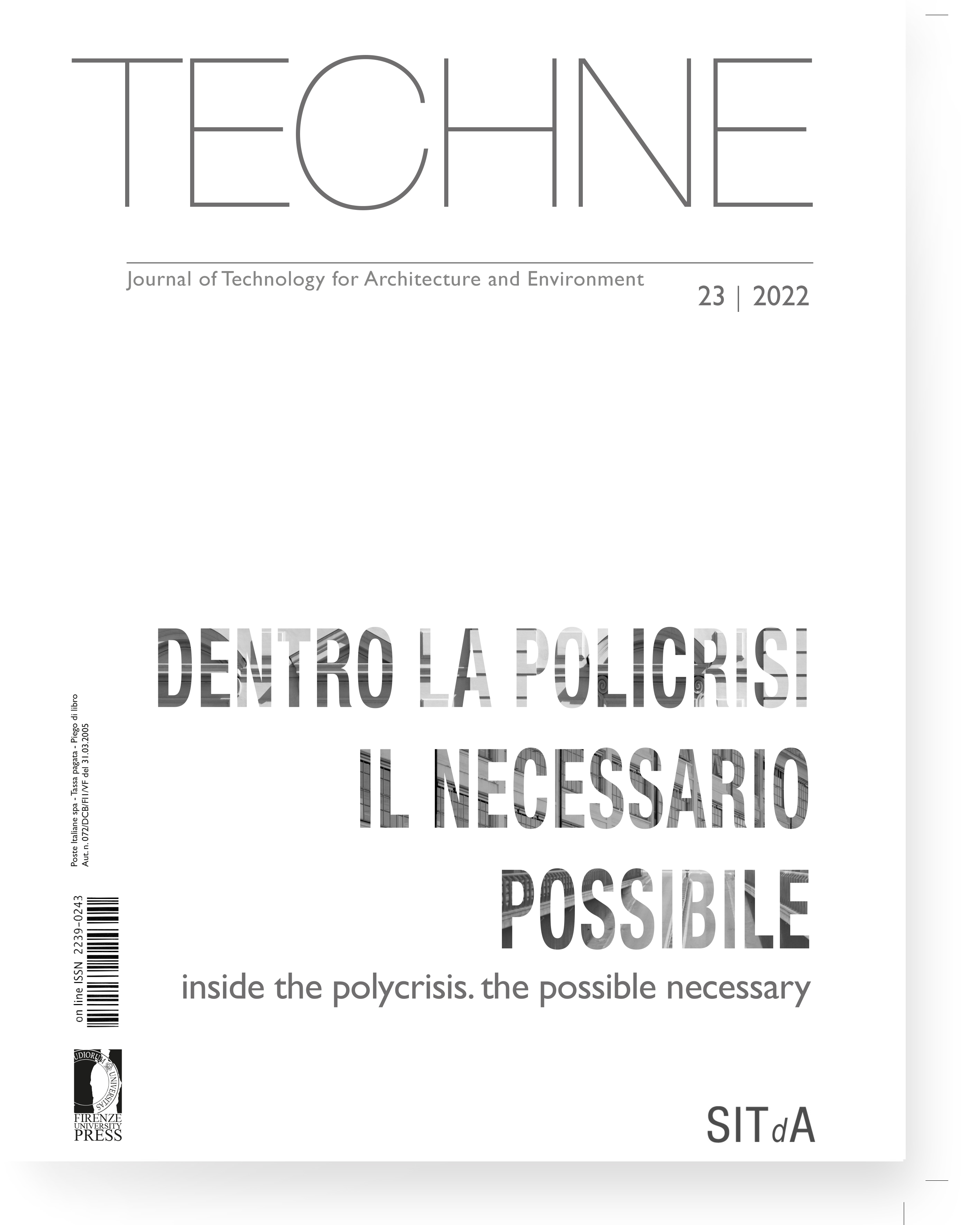Published 2022-03-17
Keywords
- eco-social transition,
- urban regeneration,
- eco-innovative technologies,
- building renovation
How to Cite
Abstract
The Journal TECHNE is a fully-fledged scientific publication with its own precise cultural
positioning on the themes of the architectural project, with a role as an observatory and in part also
as a research orientation, to disseminate the technological and environmental culture of design,
recording the evolution of its statutes and disciplinary approaches as well as to valorize, with a
critical and even self-critical spirit, the quality and rigour of research of and for the project.
The contributions of this issue n. 23 put under observation the decision-making processes of the
project, between decision and uncertainty. Highlighting the need for a reorientation towards more
flexible, adaptive and circular models, which also include the monitoring and assessment phases,
particularly necessary in the context of regenerative interventions aimed at environmental
sustainability, mitigation and climate adaptation, which require the integration and interaction of
multiple disciplinary contributions and dialogue between different actors. Equally central is the
theme of housing, with the emergence of intervention priorities of quantitative and qualitative
nature. Hence, contributions investigating possible answers to housing discomfort through case
studies and international best practices, in-depth studies on technological and digital innovations
for the energy and functional self-sufficiency of residential settlements, and on the use of open BIM
procedures for the comparative assessment of environmental and economic costs of building
products and artefacts. Digitized processes, projects and products are also used in interventions
related to fragile and at-risk landscapes, with proposals for temporary housing aimed at
overcoming emergency conditions through interoperable information models for customized
products within file-to-factory production processes.






